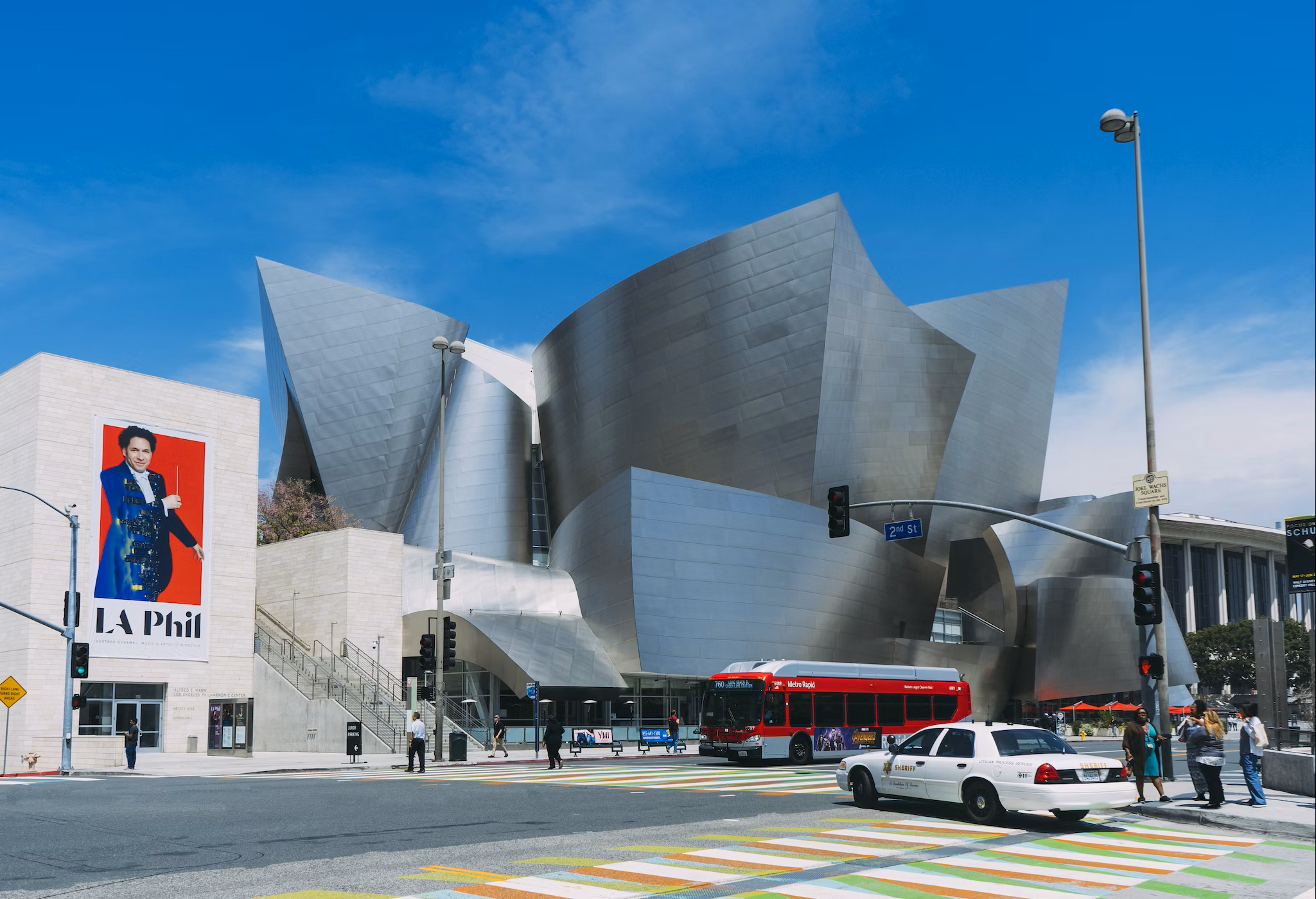As of April 30, 2025, we’re proud to announce our exciting new chapter. | Read more here.
Extended Reality (XR) is an umbrella term that encompasses other immersive visualization technologies, such as virtual reality (VR), augmented reality (AR), and mixed reality (MR). It integrates digital information with the real world in real-time, creating environments ranging from slightly augmented to entirely virtual.
In the construction industry, XR technologies are becoming increasingly useful, not just as visualization tools but as comprehensive solutions for enhancing productivity, safety, and collaboration. Now, with the recent releases of state-of-the-art AR headsets like Apple Vision Pro and Meta Quest 3, there has never been a better moment for construction companies to adopt XR into their daily workflows. Let’s take a look at some of the specific benefits that design and construction firms can expect by adopting XR into their daily workflows.
Extended Reality provides the incredible ability to create and interact with 3D models, leading architects, and engineers to a better understanding of spatial relationships and the impact of their designs within the actual environment. Augmented reality (AR) overlays project detailed architectural designs directly onto the construction site, providing a live, interactive view of how proposed structures interact with existing landscapes. This immediate, on-site visualization helps identify and rectify potential design conflicts early, reducing costly reworks and ensuring structural integrity.
Integrating Building Information Modeling (BIM) with XR technologies allows all project stakeholders to visualize complex structures in detailed virtual environments. Stakeholders can inspect architectural elements from multiple perspectives, simulate different scenarios, and see the real-time effects of changes, enhancing collaborative decision-making and planning accuracy. This level of detail and precision extends to assessing how new construction projects will affect existing buildings and infrastructure, an essential component for planning approvals and community relations.
Effective collaboration is essential for engineers, architects, contractors, and clients. XR tech significantly enhances the way these parties communicate and coordinate, moving past traditional barriers like physical distance and differing technical backgrounds. By utilizing mixed reality headsets, team members can enter a shared virtual environment where they can interact with a project’s digital twin. This virtual representation includes real-time updates and data overlays, providing a comprehensive and common understanding of the project’s progress and challenges.
This immersive XR environment facilitates real-time problem-solving and decision-making, allowing changes to be visualized and assessed instantly by all stakeholders.
For example, in a group review session, if an engineer spots a potential issue with the HVAC system’s layout, adjustments can be made immediately, and the architect and client can review their implications simultaneously. Interactions like these streamline the design and construction processes and foster a more cohesive project environment, leading to fewer misunderstandings and delays.
Keeping track of a construction project’s progress is crucial for managing timelines, budgets, and labor. XR technologies are transforming how progress is monitored and recorded, offering tools that allow real-time comparison of the actual construction against its digital twin. Managers can virtually walk through the construction site, viewing overlaid 3D models that highlight deviations from the original design, enabling immediate corrections and updates.
Digital twins also serve as an important tool in this process, providing a detailed virtual replica of the construction site that can be analyzed at any time. This continuous virtual presence on-site helps identify discrepancies early, preventing minor issues from becoming costly overruns. The ability to document and share progress in a virtual format also streamlines reporting processes, ensuring all stakeholders stay well-informed and can quickly make decisions based on the most current data.
Safety is another top concern in the construction field. Extended reality offers practical tools to enhance safety protocols and training programs. Immersive XR technologies simulate various site conditions and potential hazards within a controlled, virtual environment.
New employees can experience realistic work scenarios before ever stepping foot on-site, from navigating complex construction landscapes to handling emergency situations. These simulations are designed to closely mimic real-world conditions, providing practical training that prepares workers for the physical and mental challenges of the construction environment.
Additionally, ongoing safety training can be conducted regularly with XR to address new risks or procedures, reinforcing safe practices without exposing workers to actual danger. This approach helps reduce workplace accidents and ensures compliance with safety regulations, ultimately fostering a safety-first culture within the workforce.
Adopting extended reality in construction offers substantial benefits but also presents several challenges. Overcoming these challenges requires both financial investment and a significant shift in organizational culture to fully embrace digital transformation.
Extended Reality development involves creating applications that blend virtual and real environments. This process includes programming, designing, testing, and deploying construction software that can run on various XR hardware like headsets and AR glasses.
XR, or extended reality, is the overarching term that includes all forms of combined real and virtual environments (including AR and VR). AR, or augmented reality, specifically refers to a technology that overlays digital information onto the real world, enhancing a user’s perception of reality.
Yes, XR technology can significantly enhance construction sustainability. By enabling precise simulations and virtual visualizations, XR helps optimize material usage and minimize waste. It facilitates energy-efficient building designs through advanced modeling techniques. Additionally, virtual meetings and site visits reduce the need for travel, lowering carbon emissions. Together, these practices ensure better adherence to environmental standards, contributing to more sustainable construction outcomes.
Enscape and Autodesk Workshop XR are two great options for enhancing design and construction processes with XR.
XR can significantly impact cost management by reducing errors through improved visualization, enhancing communication to prevent rework, and streamlining the monitoring of project timelines and resources. These efficiencies ultimately lead to better budget adherence and reduced financial risk.
From ancient Greek statues to modern graphic design, every art form can be broken down into basic design fundamentals—line, shape, form, color, value, shape, and texture. Architecture is no exception and can also be dissected using these basic design elements. However, since architectural work is such a distinctive and functional art form, it also has its own set of design principles.
Architectural design principles further define the basic elements of design in a way that specifically relates to the art of architecture. They are invaluable for architectural understanding, learning, troubleshooting, and growth.
Architectural design principles are the building blocks of successful design. While they each focus on different elements of the design, they must work in tandem to ensure that a structure is visually pleasing and unified. In addition, a basic understanding of these principles assists with:
What type of symmetry does the structure have? Does it achieve visual balance?
This important principle is perhaps the easiest to identify. It refers to the visual balance, which in its most basic form can be categorized as symmetrical balance or asymmetrical balance.
Examples of symmetrical buildings include the United States Capitol Building, Taj Mahal, Pantheon, and Baiturrahman Grand Mosque. Photo Source. Baiturrahman Grand Mosque.
Photo Source. Baiturrahman Grand Mosque.
 Photo Source. Walt Disney Concert Hall in Los Angeles is asymmetrical with its highly unique shape. To achieve unity, it leans into the other principles of design and architecture, such as the rhythmic repetition of the block pattern on the steel façade.
Photo Source. Walt Disney Concert Hall in Los Angeles is asymmetrical with its highly unique shape. To achieve unity, it leans into the other principles of design and architecture, such as the rhythmic repetition of the block pattern on the steel façade.
Symmetrical and asymmetrical balance are the most basic forms of balance. However, you can also have other forms of symmetry in a structure and its architectural components. For example, radial symmetry that stems from a center point, such as a round stained-glass window, or spiral symmetry, such as spiral staircases.
What do you want the eye to be drawn to? What will lead it there?
All designs need a focal point—a natural place for the eye to rest. Without one, a building may feel unbalanced and chaotic.
To emphasize a focal point, an architect may use line, color, shape, texture, and mass. More specific methods of emphasis include:

Photo Source. While a skyscraper may fit effortlessly into a cityscape, it would look out of place in a country setting.
Are the building components proportional to each other? Does the design scale well to the surrounding environment?
How does the eye explore the work? How do users navigate and experience the building?
 Photo Source. The repetition of triangles on the Sydney Opera House creates a rhythmic flow. It does not present itself in a pattern but has a random rhythm.
Photo Source. The repetition of triangles on the Sydney Opera House creates a rhythmic flow. It does not present itself in a pattern but has a random rhythm.
Does the structure have flow? Does it employ repetition or pattern to create rhythm?
Rhythm is key to the flow of a building and is commonly created with repeating elements. A very basic example of this is how a house generally uses the same window shape across the entire design. Repetition adds unity to a structure, but it can also add movement in some cases (much like how repetition adds movement to famous works of art, such as the swirls in Van Gogh’s Starry Night).
Lastly, while not all repetition forms a pattern, all patterns have repetition. Since a pattern is predictable, it is easy and enticing for the eye to follow. Therefore, it is common to see patterns used to emphasize and draw the eye to a specific part of the design, like a focal point.
Project workflows in the architecture, engineering, and construction industry are deeply fragmented. Gaps in handoffs between planning, design, building, and operations lead to the loss of valuable data. Data loss leads to revenue loss. According to McKinsey in 2016, large projects are up to 80% over budget on average.
Digital twin isn’t the latest shiny object. It is solving some major challenges from both the design and owner sides of the equation. 2D plans and specifications remain the industry-standard deliverable for construction documents. However, owners often also ask for BIM (Building Information Modeling) without any means to articulate what they actually need or how they can use it. The typical result? Project teams spend countless, unbillable hours updating models. And, at the end of the day, these models aren’t even useful to the owner because data is trapped in files.
This analog, unclassified, and disconnected data is often an insurmountable challenge for owners and operators to monitor, manage, and fine-tune their assets. They are unable to realize the benefits of smart buildings and end up with siloed data and systems, inaccurate information, and a lack of transparency and important insights.
Now, a digital twin can finally solve this handover problem with all the data and insights at the owner and operator’s fingertips. New innovations are making this easier than ever before, such as Autodesk Tandem which brings project data together from its many sources, formats, and phases to create a data-rich digital hub that tracks asset data from design through operations.
Project teams spend countless unbillable hours updating models. Digital twin solutions such as Autodesk Tandem bring project data together from its many sources, formats, and phases to create a data-rich digital hub that tracks asset data from design through operations. The result is a single-pane view of all project insights.
Up to 89% of all IoT Platforms will contain some form of digital twinning capability by 2025.
–Researchandmarkets.com
The digital twin can be connected to the built asset’s systems to collect operational performance data and system models can be created to perform simulation. Owners and operators can monitor and tune energy consumption and carbon emissions, as well as support facility utilization and contact tracing. To accomplish these goals, the digital twin must evolve over time and requires a constant feed of data. But in return, nearly 80 percent of an asset’s lifetime value is realized in operations.
As a result of COVID-19, 31% of all respondents use digital twins to improve employee or customer safety, such as the use of remote asset monitoring to reduce the frequency of in-person monitoring.
–Gartner
Operational data collected through a digital twin informs long-term decisions about investments. The digital twin can be used to produce realistic simulations of updates, predict failures, and even forecast planning needs.
When owners begin operations with a data-rich digital twin made up of objects rather than PDFs and spreadsheets, there is an incredible opportunity to reduce the risk inherent to decision-making.
The global digital twin market size was valued at USD 3.1 billion in 2020 and is projected to reach USD 48.2 billion by 2026.
-MarketsandMarkets
Digital twin isn’t far off in the future—it’s happening now. Learn more about how to join Autodesk’s Project Tandem, digital twin community, and upcoming beta program to build the future together.

Features the latest informative and technical content provided by our industry experts for designers, engineers, and construction firms and facility owners.
LEARN MORESTAY IN TOUCH